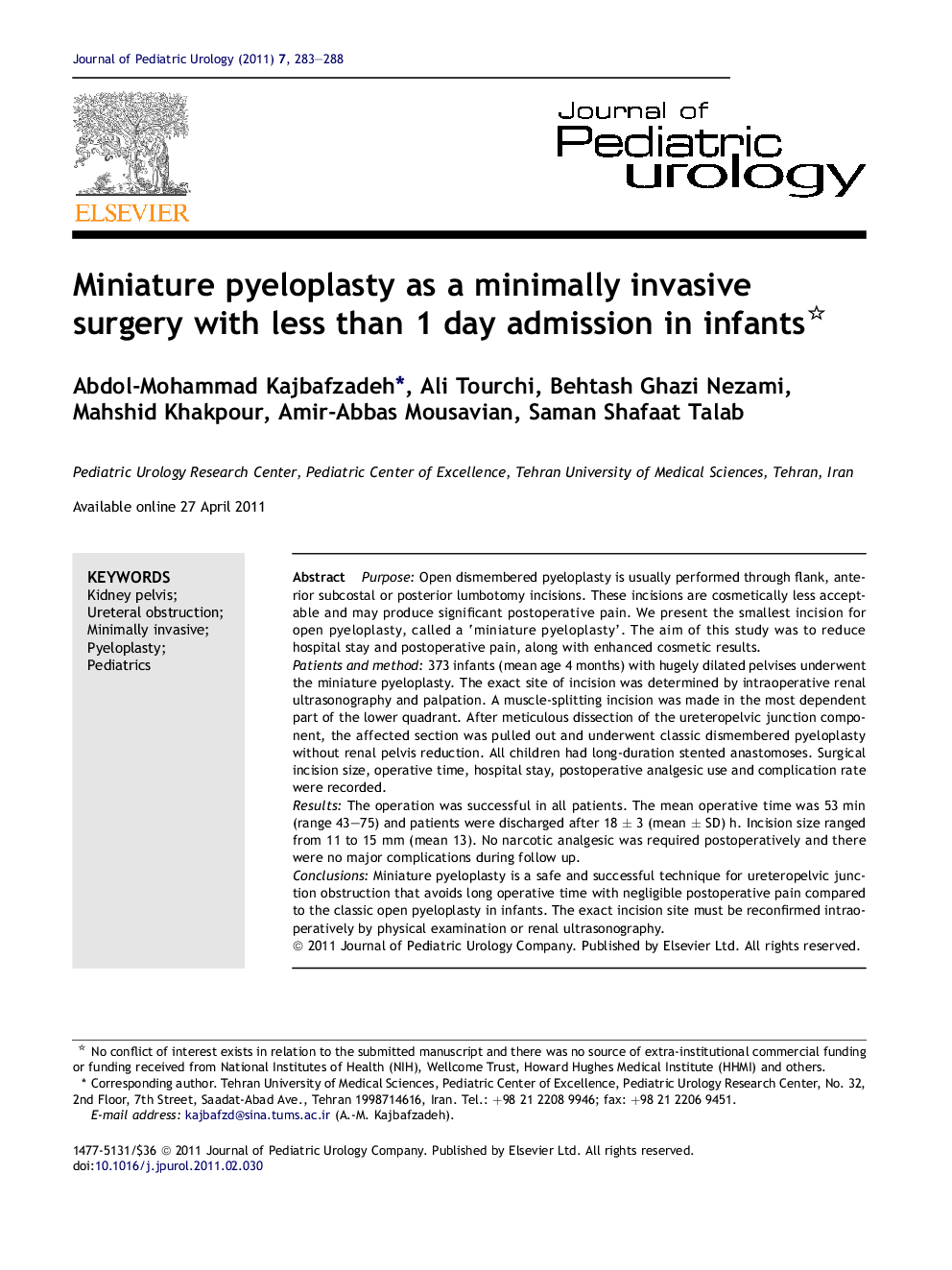| Article ID | Journal | Published Year | Pages | File Type |
|---|---|---|---|---|
| 4163803 | Journal of Pediatric Urology | 2011 | 6 Pages |
PurposeOpen dismembered pyeloplasty is usually performed through flank, anterior subcostal or posterior lumbotomy incisions. These incisions are cosmetically less acceptable and may produce significant postoperative pain. We present the smallest incision for open pyeloplasty, called a ‘miniature pyeloplasty’. The aim of this study was to reduce hospital stay and postoperative pain, along with enhanced cosmetic results.Patients and method373 infants (mean age 4 months) with hugely dilated pelvises underwent the miniature pyeloplasty. The exact site of incision was determined by intraoperative renal ultrasonography and palpation. A muscle-splitting incision was made in the most dependent part of the lower quadrant. After meticulous dissection of the ureteropelvic junction component, the affected section was pulled out and underwent classic dismembered pyeloplasty without renal pelvis reduction. All children had long-duration stented anastomoses. Surgical incision size, operative time, hospital stay, postoperative analgesic use and complication rate were recorded.ResultsThe operation was successful in all patients. The mean operative time was 53 min (range 43–75) and patients were discharged after 18 ± 3 (mean ± SD) h. Incision size ranged from 11 to 15 mm (mean 13). No narcotic analgesic was required postoperatively and there were no major complications during follow up.ConclusionsMiniature pyeloplasty is a safe and successful technique for ureteropelvic junction obstruction that avoids long operative time with negligible postoperative pain compared to the classic open pyeloplasty in infants. The exact incision site must be reconfirmed intraoperatively by physical examination or renal ultrasonography.
